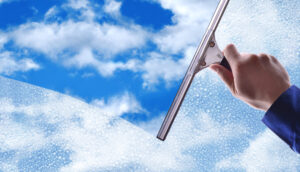Tips and Tricks for Cleaning Windows

*Updated January 3rd, 2025
Cleaning windows might seem like a tedious chore, especially when faced with stubborn dirt, smudges, or streaks that just won’t budge. Without the right techniques and tools, it can feel like an uphill battle to achieve that crystal-clear, sparkling finish. However, with a few practical tips and tricks, you can transform this task into an easy and satisfying process.
Whether you’re tackling indoor or outdoor windows, addressing hard water stains, or dealing with everyday grime, this guide will walk you through the most effective methods for spotless windows. From choosing the best cleaning solutions to using professional-grade tools, you’ll learn how to clean windows efficiently and effortlessly.
Say goodbye to streaks and smudges, and hello to windows that let the light shine through! With these tried-and-true recommendations, you’ll have your windows looking as good as new in no time.
1. Avoid Sunny Days
Washed windows are the ultimate indicator of a tidy home, but it’s not easy to make them shine under direct sunlight. When the sun is shining directly on your windows, cleaners can evaporate quicker than expected and leave frustrating streaks behind. On an overcast day however, you’ll be able to tackle those marks with ease thanks to reduced glare from the glass.

2. Invest in a Squeegee
Half the battle when it comes to cleaning is investing in the proper tools for the job. Professionals swear by squeegees, particularly for bigger, large pane windows. The most effective way to ensure a streak-free shine is to make sure all the water and soap are completely removed from the window. Use the rubber blade to scrape any excess water from top to bottom in one quick stroke. When it comes to use of this tool, technique is particularly important.
3. Clean Routinely
When it comes to frequency of cleaning, it will differ depending on your specific situation. Interior windows should be wiped down every three to four months in general. When it comes to exterior windows, the frequency will be dependent on the weather. If you live in a location with above-average rainfall, high wind conditions, or lots of pollen for example, you may require more than the recommended once a month cleaning.
4. Select the Correct Cleaner
As you stroll through the grocery aisle, there are a million different cleaning products to choose from that promise results. It’s not necessary to splurge on specialty window cleaners – the toughest grime can be washed away by a simple combination of dish soap and warm water. When it comes to a soapy detergent, remember that less is better. Overdoing it with a soapy detergent can cause residue to build up, creating streaks on your glass. Another effective cleaner you most likely already have laying around the house is vinegar and water.

5. Steer Clear of Paper Towels
If you’re looking for an effective way to clean your glass surfaces and remove dirt, dust, and grime without leaving any lint residue behind – forget about using paper towels. Instead, investing in a microfiber cloth is the way to go. They are designed specifically to grab particles from all types of surfaces while providing streak-free results.
6. Prep the Space
Just as you would prep your space before starting a painting job, light prep work prior to washing your windows may lower the amount of scrubbing needed. Before you begin to wipe down your windows, get out the vacuum! Bring it in closer with a handheld version or attachment, whichever works best for those hard to reach spots. Vacuuming around and within the frame will pick up anything that can cause damage like dust particles or larger debris which might otherwise streak or scratch as soon as you start taking on water stains.
7. Remove Residue
For stubborn spots like adhesive residue or greasy smudges, rubbing alcohol is a great solution. Dab a small amount on a microfiber cloth and gently rub the affected area. Follow up with your regular cleaning solution to ensure a pristine finish.
8. Finish with a Dry Buff
Once the window is clean and dry, give it a final buff with a dry microfiber cloth or a lint-free towel. This extra step ensures any remaining streaks or smudges are eliminated, leaving your windows crystal clear.
Final Thoughts
Cleaning windows doesn’t have to be a frustrating or time-consuming task. By applying the tips and tricks shared in this guide—like using the right tools, choosing effective cleaning solutions, and adopting professional techniques—you can achieve streak-free, sparkling windows with ease.
Whether you’re tackling hard water stains, smudges, or dirt buildup, a little preparation and the right approach can make all the difference. Regular window cleaning not only enhances the appearance of your home but also lets in more natural light and extends the life of your windows.
FAQs:
What do professional window cleaners use to clean windows?
Squeegee is an amazing tool to invest in for streak-free windows. You can find these online, as well at most home improvement stores. If you decide to make the purchase, make sure it has these components:
- An ergonomic handle
- A channel for the rubber (12-18 inches should be sufficient)
Why do my windows look smeared after cleaning?
A common problem is the evaporation rate, which is the primary reason it’s not recommended to clean your windows on a warm, sunny day. When the liquid part of the solution evaporates quickly, the residue it leaves behind will create streaks. In addition, if you don’t remove the cleaner entirely you can be left with streaks.
What tools are necessary for cleaning windows?
- Bucket: A large bucket will come in handy for mixing cleaning solution.
- Scraper: A scraper is useful for removing buildup like paint, stickers, or tape residue.
- Cleaning solution: We recommend making your own using soap or vinegar.
- Extension pole: If you have high or hard-to-reach windows, an extension pole can be attached to your squeegee to make the job easier.
- Squeegee: This is arguably the most important tool for cleaning windows. Look for a high-quality squeegee with a sturdy handle and replaceable rubber handle.
- Microfiber cloths: Rather than paper towels, use a lint-free cloth to wipe the squeegee blade and clean any remaining water or streaks from your glass.
Additional Window Resources
- Transform Your Home with Transom Windows
- Window Styling Tips by Window Type
- 7 Ways to Add Character to Your Windows

Anna has over six years of experience in the home services and journalism industries and serves as the Content Manager at MyHomePros.com, specializing in making complex home improvement topics like HVAC, roofing, and plumbing accessible to all. With a bachelor’s degree in journalism from Auburn University, she excels in crafting localized, comprehensive guides that cater to homeowners’ unique needs. Living on both coasts of the United States has equipped her with a distinctive perspective, fueling her passion for turning any house into a cherished home through informed, personalized decision-making.






